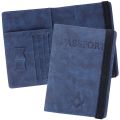A History & Meaning of Masonic Symbols
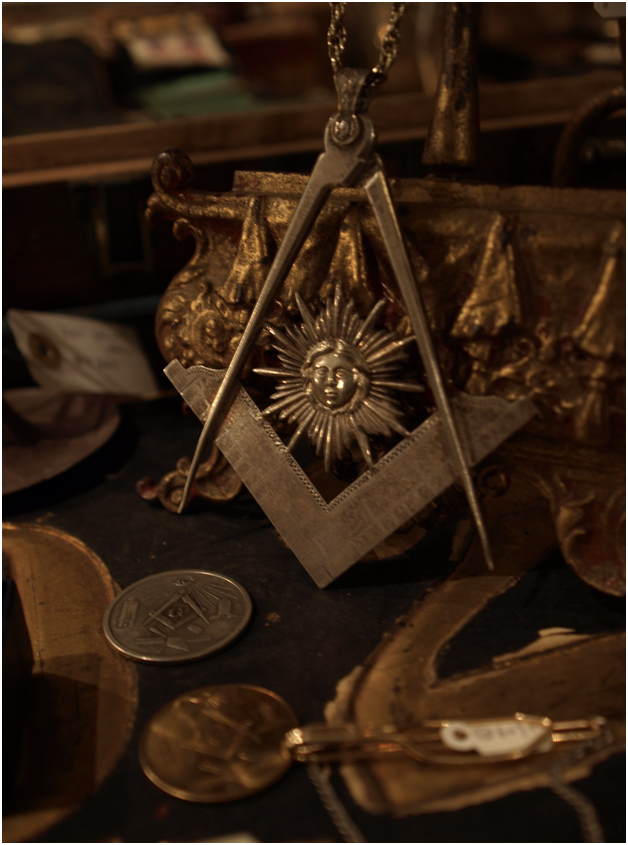
From classic literature to architectural elements to a member’s cufflinks, Masonic symbols are an incredibly important part of this historic fraternal order. So how do you make sense of their meanings and purposes?
As a leading purveyor of regalia, it is our solemn responsibility to educate others about Freemasonry’s storied legacy.
Why Are Masonic Symbols Used?
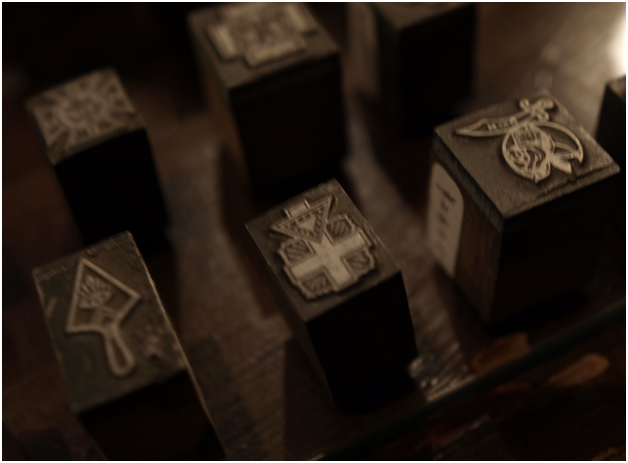
Symbols provide instant recognition and allow fellow members to “speak without speaking.” This uniformity helps create a greater sense of community by reinforcing principles of respect, brotherly love, and truth.
Like the historical bricklayers, stoneworkers, and artisans that built the foundation of Freemasonry, the majority of Masonic symbolism is defined by elements of geometry.
A Note: Masonic Symbols vs Emblems
When people speak about “Masonic symbols”, these may have multiple connotations. When we speak about Masonic emblems, however, we’re speaking about images that have a single, definitive purpose.
47th Problem of Euclid
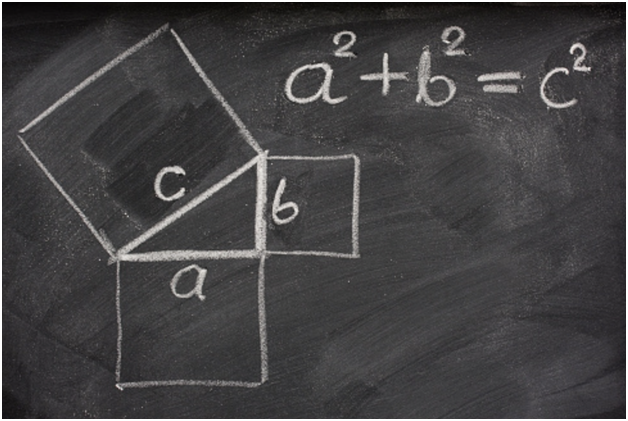
Also referred to as the Pythagorean Theorem, the 47th Problem of Euclid is represented by three squares. Understandably, perfect squares are vital for building, and this mathematics discovery changed the way that humans were able to create lasting architecture.
Acacia Tree
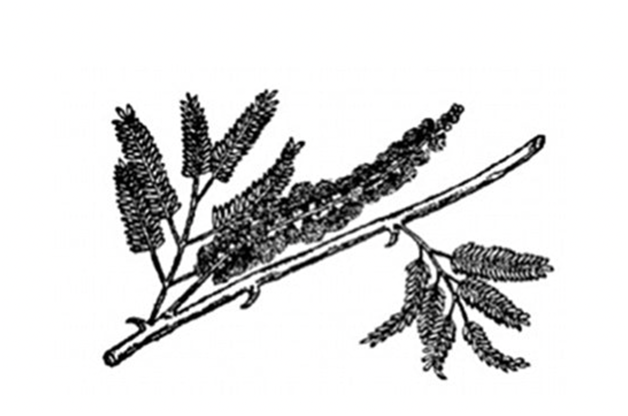
A desert plant, the wood of an acacia tree was used to build the Ark of the Covenant. Much like the deep community ties created by members, this species is able to survive droughts due to its deep root system. After a fire, small roots are known to regenerate, showcasing hope of regeneration in times of difficulty. You may see this represented by a sprig of acacia.
The All-Seeing Eye
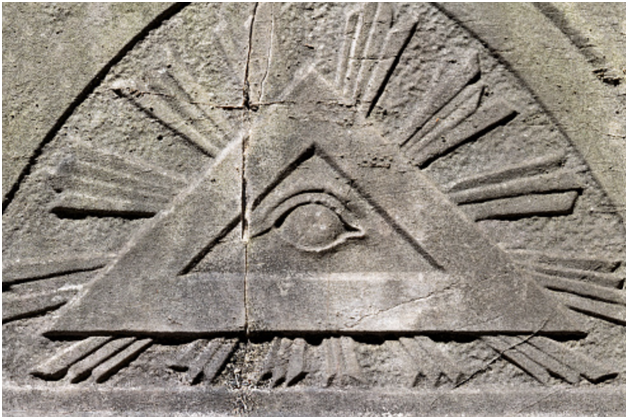
Also referred to as the “Eye of Providence”, this symbol is an eye placed in the centre of a triangle or pyramid. Historically, the triangle is widely understood to represent the Supreme Being’s ever-present watchfulness.
There’s a myth that Freemasons designed the back of the US dollar bill. However, the Eye of Providence is a common icon throughout history. Further, those who created the final version of the US Dollar were not members of the fraternal organisation.
Anchor
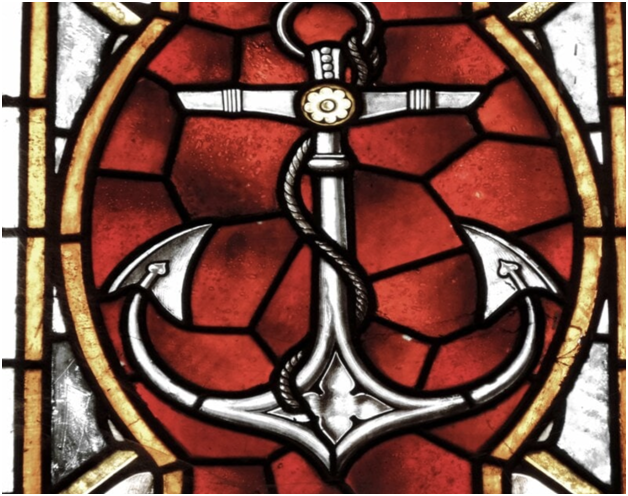
Anchors have been found in early Christian Roman graves. Historically, anchors are associated with symbols of hope and grounded faith during “stormy” times. Noah’s Ark may accompany this symbol for similar purposes.
Apron
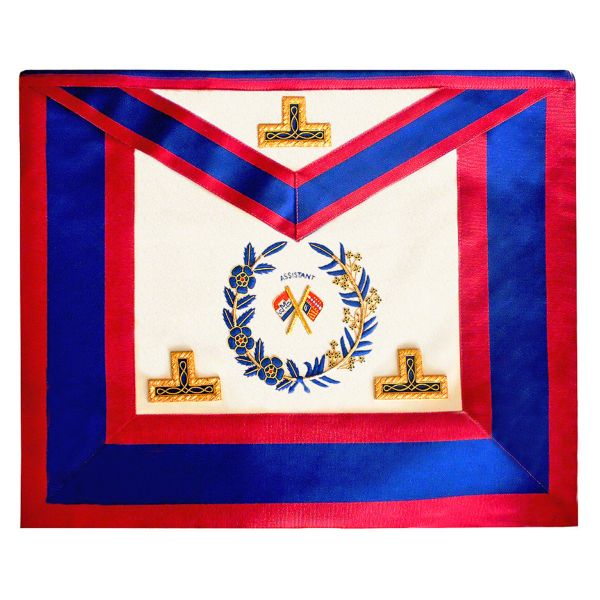
No matter your order or lodge, white lambskin aprons have been consistently worn by Freemasons since the beginning of the organisation. They are symbols of honour, purity and achievement.
Ark of the Covenant
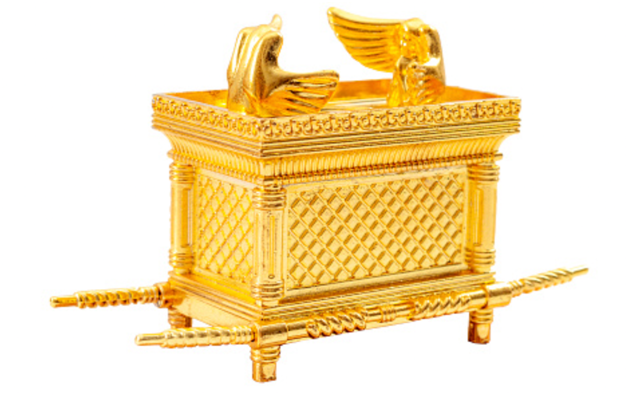
Solomon’s Temple was built to house the Ark of the Covenant, and the Ark was built to house the 10 Commandments, a golden pot filled with manna, and the shepherd rod of Aaron. It was lost after Jerusalem was sacked by the Chaldeans. The Ark of the Covenant represents the light within man and God’s forgiveness of all sins.
Ashlar
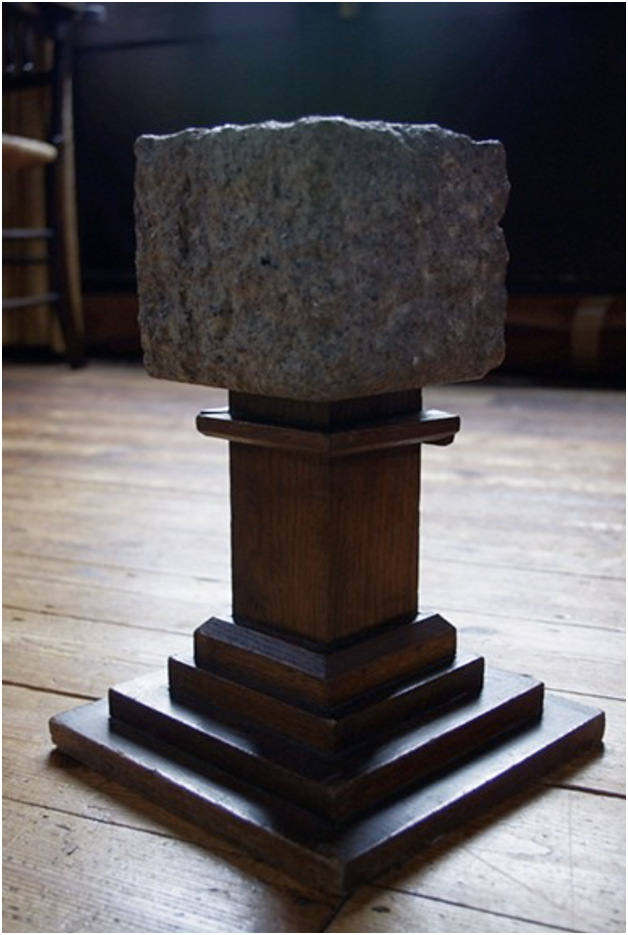
Traditionally, only the most skilled stoneworkers were able to use ashlars (rather than bricks or wood) to build large structures. A Rough Ashlar represents the need for improvement in a person’s life. The Perfect Ashlar is smooth, shaped and shows how a Freemason is able to become a better person through perseverance.
Beehive
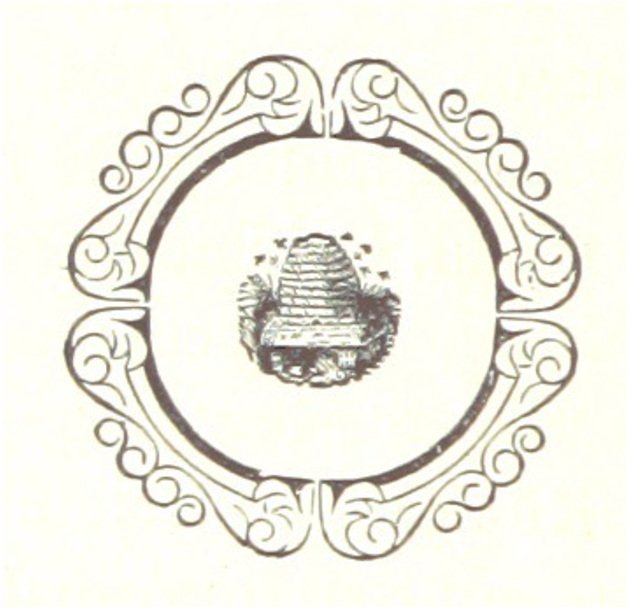
There are two reasons that Freemasons occasionally use a beehive in their symbolism: Bees tend to work diligently together and honeycomb is one of nature’s most perfect geometric shapes.
Blazing Star
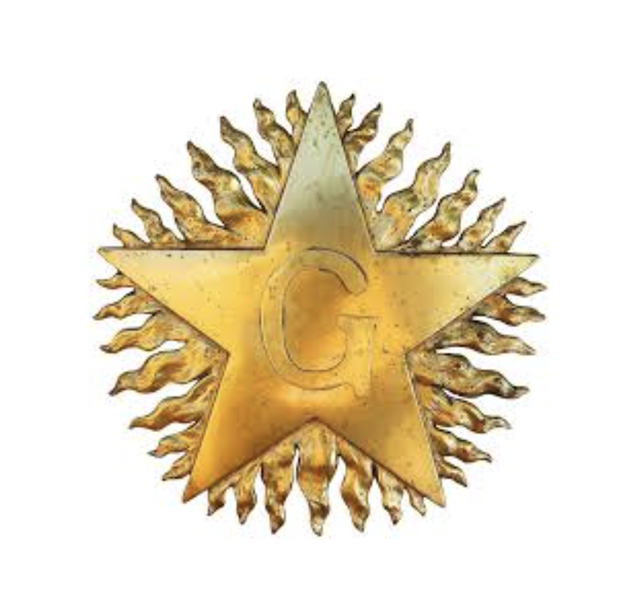
Easily one of the most important Masonic symbols, the blazing star represents many central tenets of Freemasonry:
- The Supreme Being who makes us better people.
- The Star of Bethlehem which leads our way towards spiritual fulfilment.
- Diligence and the principles needed to live a better life.
- The Sun, which provides Earth with life-giving light.
Note: You will often see these symbols emblazoned with the letter G.
Broken Column
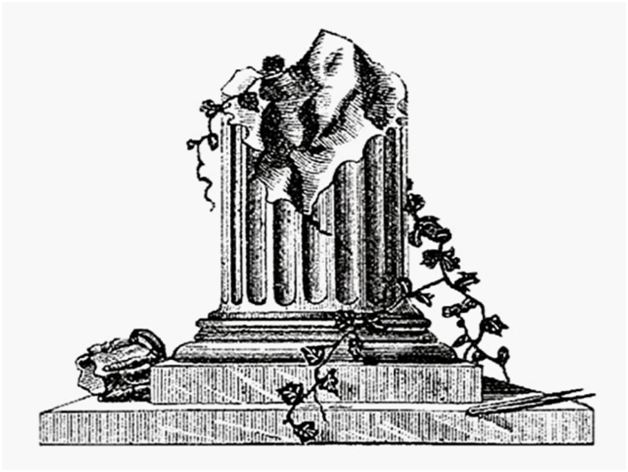
One of the more recent Masonic symbols added to the canon, they illustrate the weakening of the state or a fall of a higher-level supporter of Freemasonry.
Celestial Objects
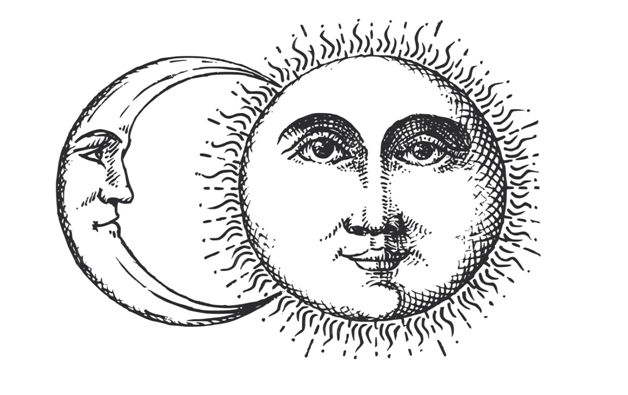
The sun, moon, and stars are common Freemasonry symbols that encourage leaders to wield their power with fairness and consistency.
Ear of Corn
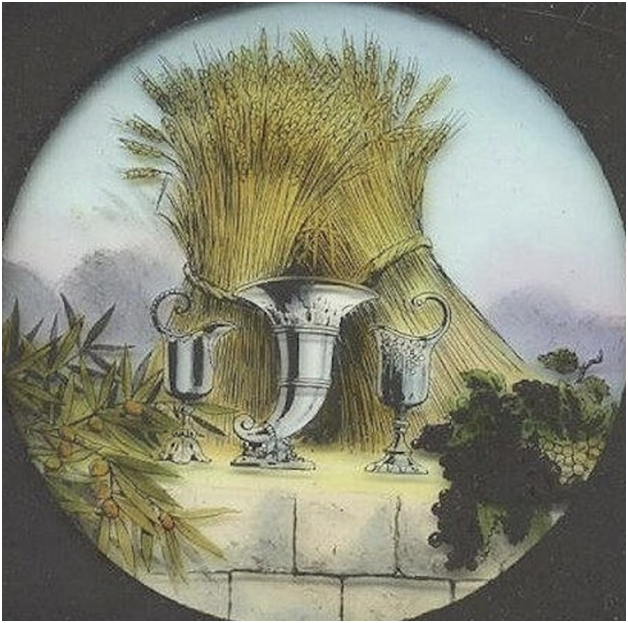
The sheaf of corn can have multiple meanings in Freemasonry, but especially bounty and charity (ie. providing to those less fortunate). This term can be used interchangeably as a sheaf of wheat, barley and grain.
Note: You may also see a symbol of corn, wine, and oil.
G (The Letter)
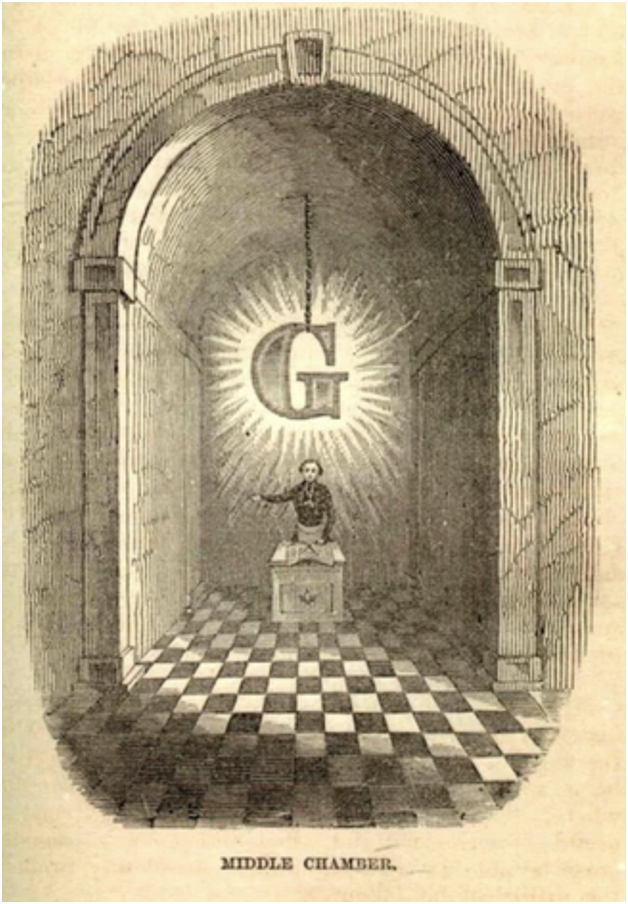
Understandably, geometry is an intrinsic part of stonework and this symbolism has carried into modern Freemasonry in the form of a “G.”
Gavel or Mallet
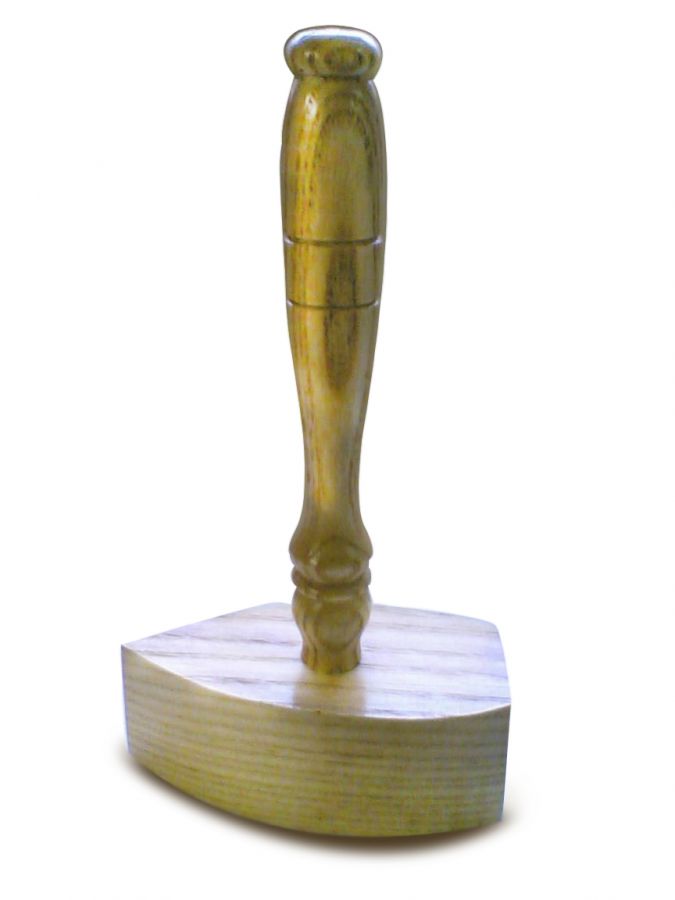
Common gavels (or operative gavels) break off and finish the rough parts of stone so they fit perfectly together. They’re the first tool that apprentices learn their trade on and represent our need to educate and improve our imperfections. A mallet would set larger stones into place while setting mauls would hammer stones to close gaps. The latter is a symbol of the highest office (Masters) to display executive power.
The Globes
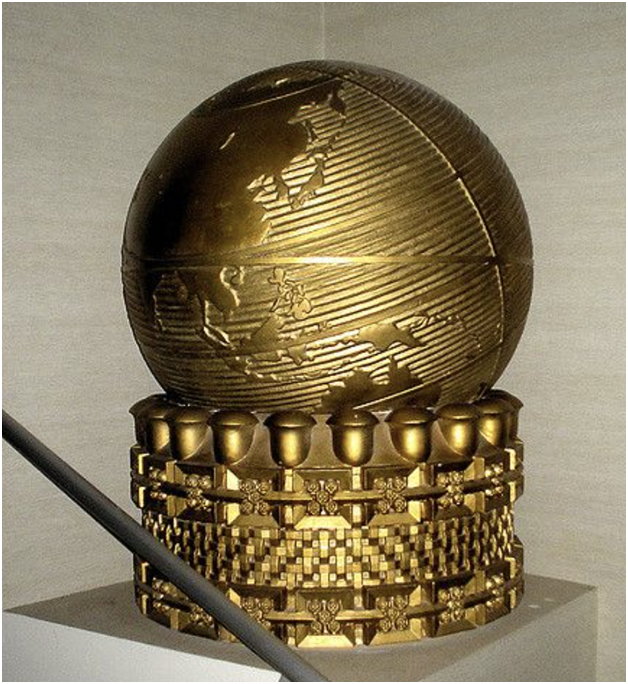
A symbol of universality, a terrestrial globe rests on a Masonic column. Traditionally, these bolster a Freemason’s studies in astronomy, geography, and other scientific pursuits.
Hourglass
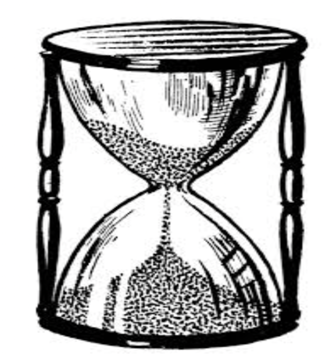
Often accompanied by wings, an hourglass represents the fleeting nature of life and is a reminder to make the most of your time on this planet.
Keystone

A keystone is the single, strangely-shaped stone that holds arches together without sacrificing structural integrity.
Legend has it that Hiram invented the keystone which King Solomon’s builders rejected until the King himself asked for it. Modern Masonic keystones incorporate “HTWSSTKS” in a circular pattern, meaning “Hiram the Widow’s Son Sent to King Solomon.”
Mosaic Pavement
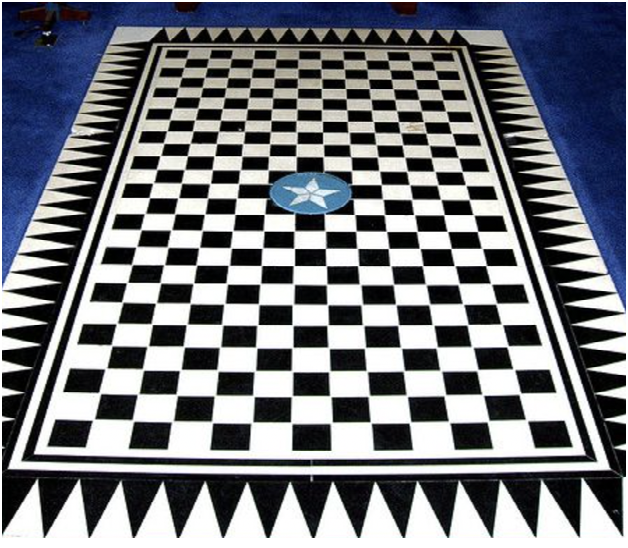
It is believed that King Solomon’s Temple was fitted with a black-and-white checkerboard floor and the indented tassels in four corners. The blazing star is typically located in the centre. Many believe this represents a balance between good and evil.
The four corners refer to cardinal values that guide each Freemason on their path: Justice, Fortitude, Prudence, and Temperance.
Plumb & Level
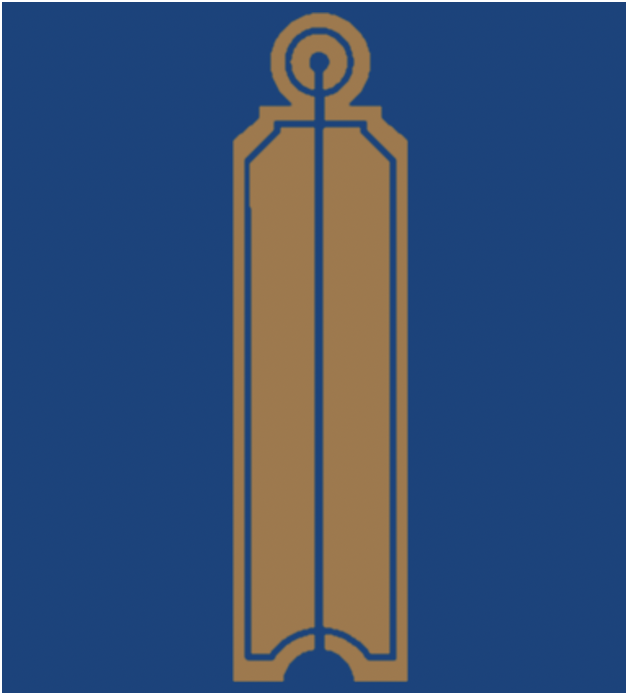
In masonry, plumbs and levels ensure that working surfaces are both vertically and horizontally even. Whether you’re building a spiritual or literal foundation, you’ll on these tools to do so.
Plumbs are used to ensure vertical stability. Metaphorically, they represent living in an moral, upright way. You may see these symbols designed simply or ornately.
Levels represent the belief that men are equal and – no matter their talents or station – they use come to their lodge with mutual respect and unity.
Point Within a Circle
We’ve all seen it: a point in the centre of a circle, bordered by two vertical, parallel lines. The meaning isn’t exactly clear. Found as far away as ancient India and Egypt, it’s believed that it was used to square and build structures. Similarly, it may symbolise a way of squaring actions with virtue.
Pot of Incense
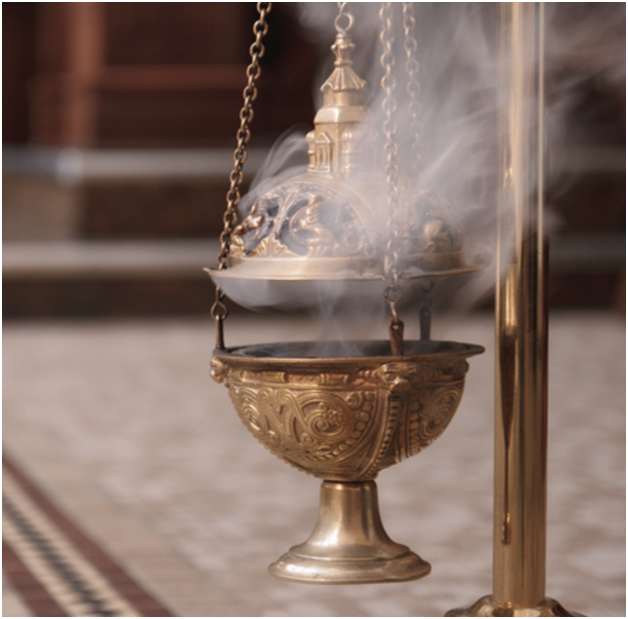
While incense isn’t used in ceremonies, it symbolises a pure heart. The smoke rising from it reflects lifting prayers up to the Divine Creator.
Scythe
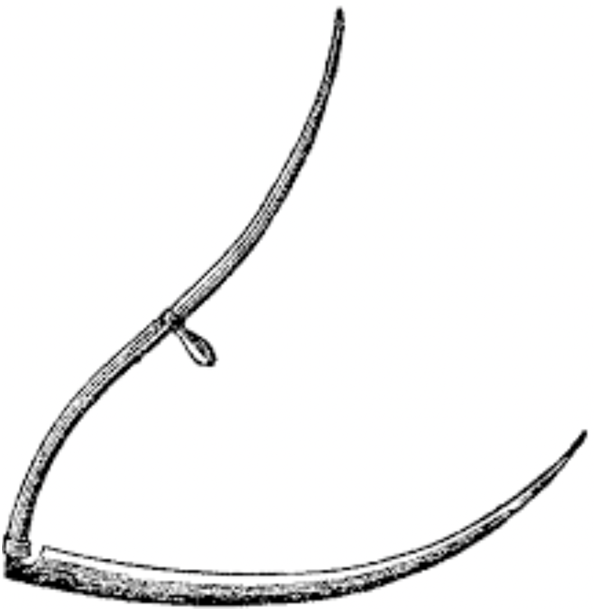
Though it tends to be associated with Death and destructiveness, the scythe cuts away the old to make way for new growth and development.
Solomon’s Temple
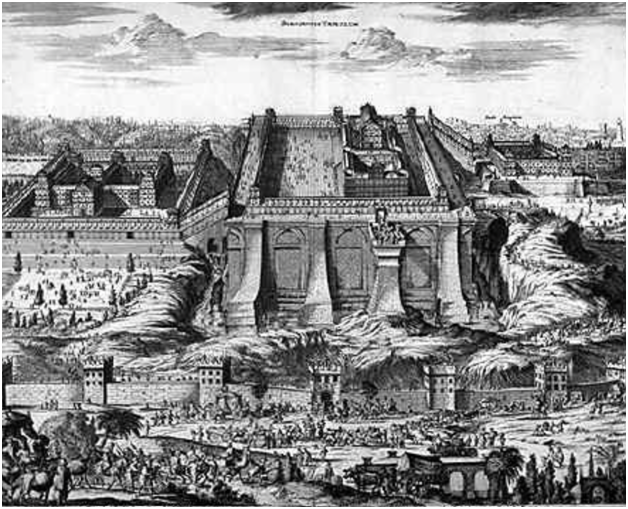
In Freemasonry, the first three Grand Masters were King Solomon, King Hiram I of Tyre, and Hiram Abiff (who was the architect who was responsible for building the structure).
Square & Compass
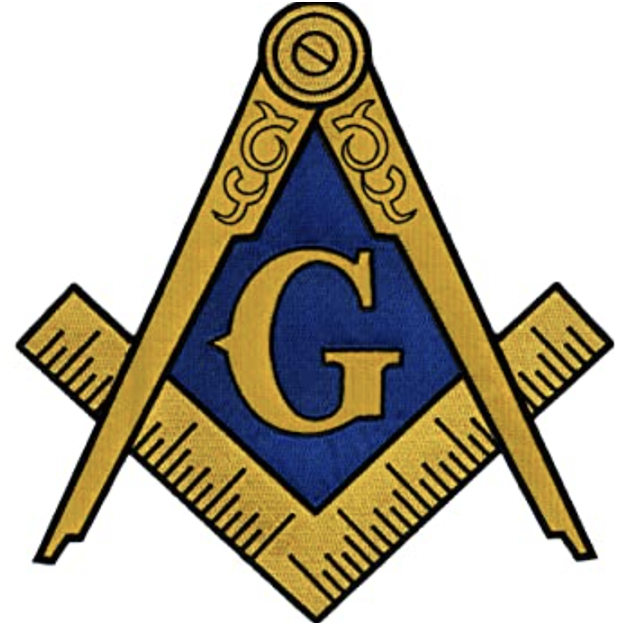
The Square & Compass is an Masonic emblem that’s made up of two separate symbols that, when linked, result in balance:
● Square
Found at the bottom of a Masonic emblem, a square ensures 90º corners and a structurally-sound building. Being “square” has a connotation of honesty and integrity.
● Compass
Used to trace perfect circles, the compass represents wisdom and a reminder to keep desires within reach.
Tracing Boards
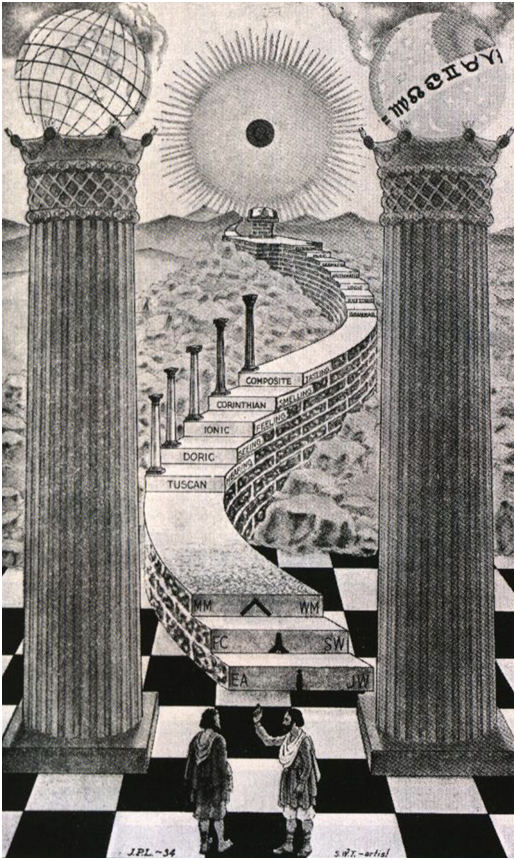
Historically, Master Masons used tracing boards to map out buildings. Today, they are a more esoteric concept that represent various Degrees.
Trowel
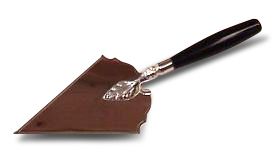
A Mason’s trowel is one of the most valuable tools for laying stones. Just as it spreads mortar to adhere bricks and stones, it also binds an organisation’s members together.
Two Columns
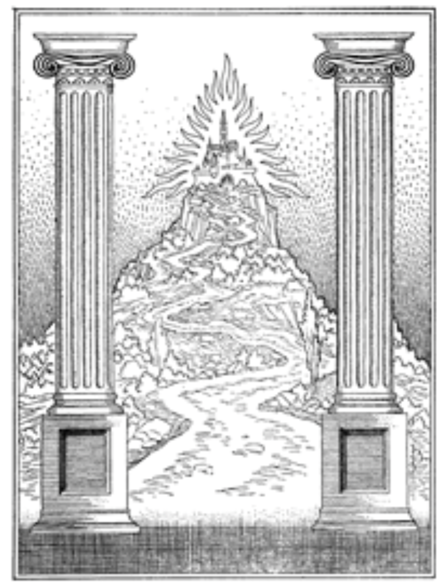
The two pillars illustrate those that you’d pass by as you entered the Middle Chamber of King Solomon’s temple. Just as the most skilled artisans built this holy place, these two columns depict strength when members work together for a common goal.
Masonic Regalia That Reflects Deep Symbolism
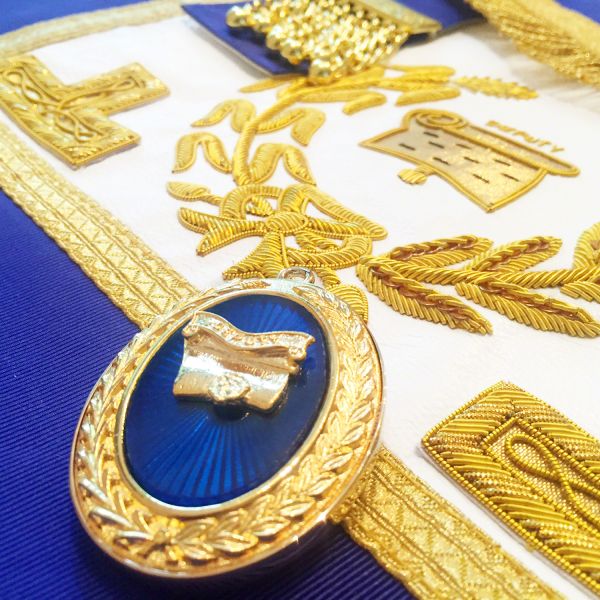
As the leading purveyor of Freemasonry regalia, we understand the incredible significance that these objects have. Whether you purchase from one of our collections or create a custom order, our clients depend on our exemplary satisfaction guarantee. Contact our customer service team for more information.

